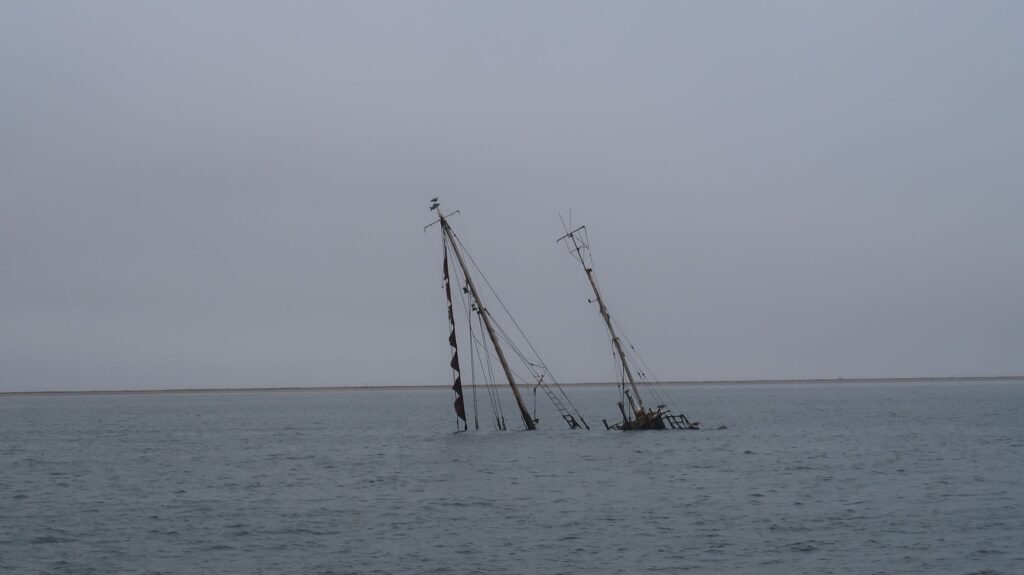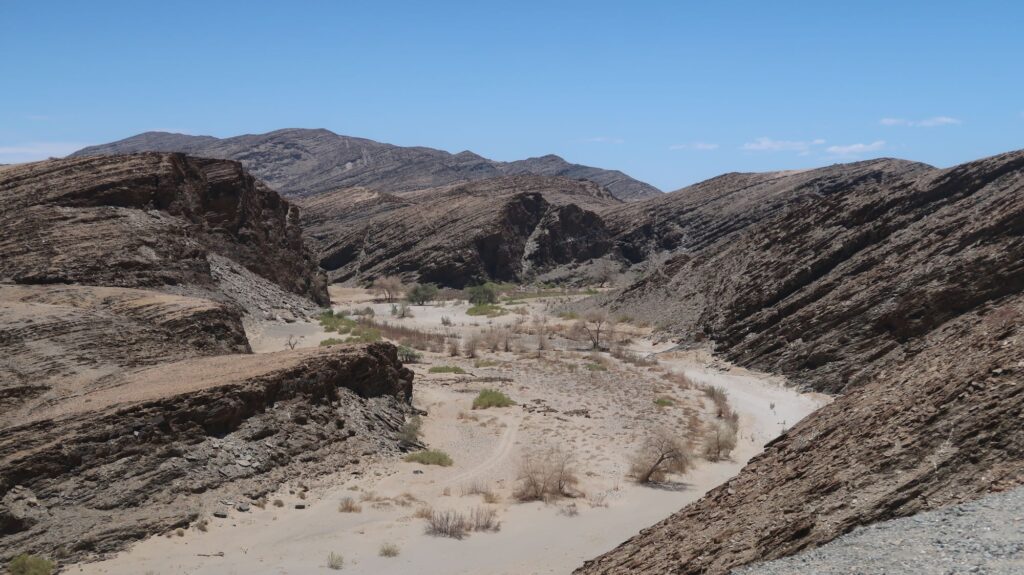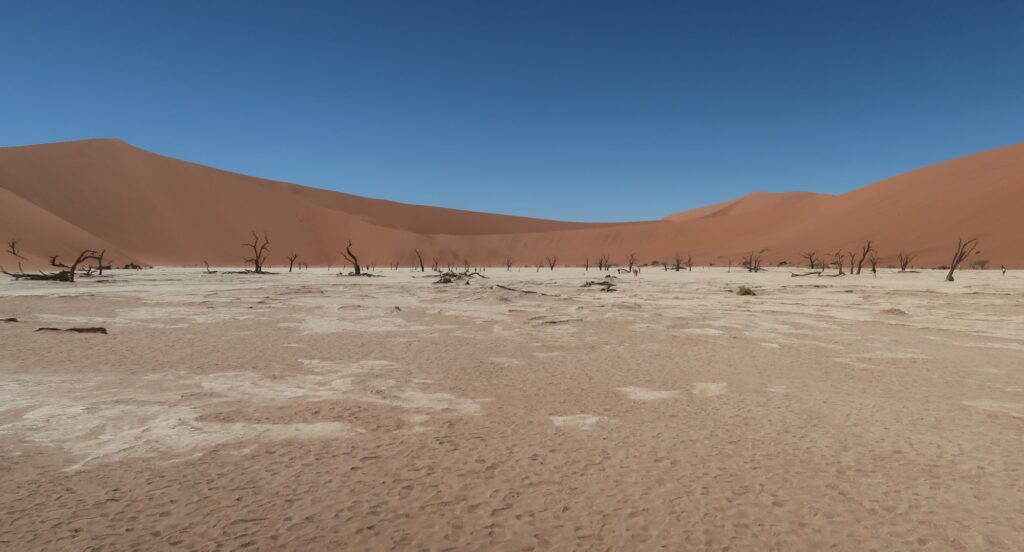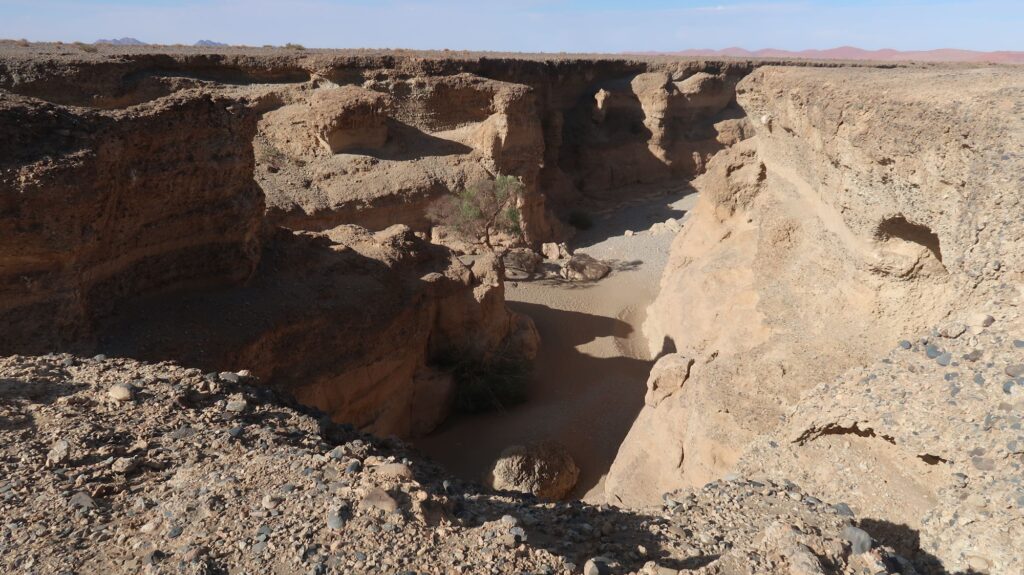It’s probably not the tag line the Namibia PR people want to see but it’s accurate based on the week I spent here and the parts of the country I saw. There are other places I didn’t see in the north with big game but I do know that Namibia promotes the Namib desert and huge sand dunes as its primary attractions.
With my boat tied to a great concrete jetty, a 1 km walk from the Walvis Bay Yacht Club facilities, I rented a 4×4 Ranger pickup and headed out, first north to Swakopmund and the Skeleton Coast. Leaving Walvis Bay, the scenery quickly turned to pure desert on both sides of the road which ran parallel to the ocean a couple of hundred meters inland. There’s really nothing to see until Swakopmund.
Swakopmund is regarded here as probably the most attractive town in Namibia. Situated right on the water, it’s a pleasant, walkable place with many restaurants, shops, and hotels, unlike Walvis Bay which is a heavy-duty industrial port town.
I drove north from Swakopmund along what is known as the Skeleton Coast because of many wrecked ships there over the centuries, and because many dead whales that have washed ashore, their bleached bones sometimes scavenged in the past by local tribes to build huts. Essentially, all the shipwrecks have been so degraded over time there’s nothing left to see. One recent, very visible wreck, the “Zelia”, not far north of Swakopmund, had actually been sold for scrap and was in the process of being towed from Walvis Bay when the tow line broke. It drifted to its current location aground, not because of a navigation error or a storm. A pretty inauspicious shipwreck story.
After a night in a Swakopmund hotel I drove over rough gravel roads into the Moon Valley and spent the night at the Goanikontes Oasis, a cluster of bungalows and camping sites among the trees along the river at the bottom of the parched dry Moon Valley. Not a particularly impressive place to stay but the restaurant and bar were OK.
Next I moved on to the “show-stopper” in Namibia, the big red sand dunes of Sossusvlei. It’s about a 300 km drive from Walvis Bay over a road that is only partially paved, the rest being gravel, sometimes very rough washboard gravel, that rattles the bones and the vehicle. I was glad I was driving a 4×4.
From all this driving I had the impression I could have been in many desert landscapes I have known, like driving around Nevada or Arizona. It just wasn’t that different or special. The Moon Valley had exposed rock formations along a river that distinguished it from the flat desert around it but otherwise not particularly noteworthy. Nevertheless, it is definitely promoted as a tourist attraction in Namibia. I came to realize Namibia is being over-promoted in many ways.
I stayed two nights in the Sossusvlei Lodge, certainly the nicest accommodation near the big sand dunes. I thought I would need a full day to see the place but a half day was enough. The park gate opens at 6 am so everyone is lined up to enter then and see the dunes before it gets too hot. I drove in with the rest, stop at a few viewpoints, then got to Dune 45 (yes, they’re named or numbered). This is a very popular dune to climb so I made the effort. Younger, stronger people passing me going up and down. There really isn’t any opportunity to exercise on the boat so my cardio fitness and basic muscle strength has deteriorated since I started this voyage. But I persevered and made it to the top after a 40 minute climb.
After Dune 45 the road leads farther into the valley to the last 6 km over sand where it’s advisable to take a 4×4 shuttle with an experienced sand driver. Deadvlei is a large, ancient flat pan where water dried up eons ago leaving stark dead trees. It is found at the end of the road after a 1.5 km walk over relatively flat sand. This is also the starting point to climb “Big Daddy”, the largest dune in the park and one of the largest in the world at almost 300 meters tall. After the struggle to climb the smaller Dune 45, there’d be no Big Daddy for me.
And that’s it. There’s a smaller version of Deadvlei called Hiddenvlei if you want to see it. There is also Sesreim Canyon, a 30 meter deep rocky canyon that runs for about 2 km. Because of shade throughout the day, sometimes water will still pool there attracting animals. None were there when I stopped. Anyway, you can do it all before lunch and before the afternoon heat. Overall, I was disappointed with the place. There are certainly the huge red sand dunes but they’re far away from the road so you don’t get the sense of them looming over you.
From Sossusvlei I drove back to Walvis Bay along the same poor road. I spent my last morning there, before departure on November 21, on a half day tour south to Sandwich Harbour. That tour is basically a lot of dune driving on big while sand dunes that run down to the sea. I went on this tour mainly to satisfy myself that I had seen it all in terms of what Namibia primarily promotes as their top attractions.
According to a few local tour guides I met along the way, “land of sand” tourism suffers from the poor roads and limited infrastructure. Tour operators from Europe and elsewhere don’t want to send people here and subject them to the bad roads and sparse accommodations.
I’m glad I saw it for myself, though. If you’re in the neighborhood, as I was, it’s worth a visit but I don’t think Namibia is spectacular enough to warrant a special trip just to see it.











